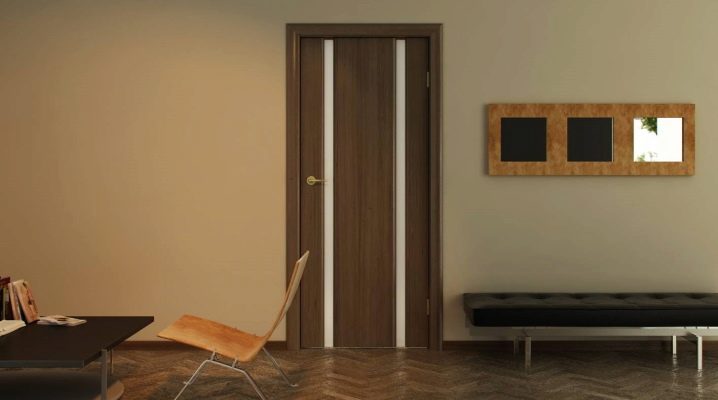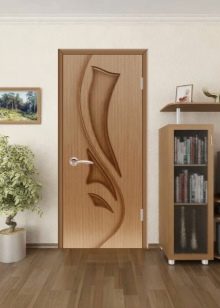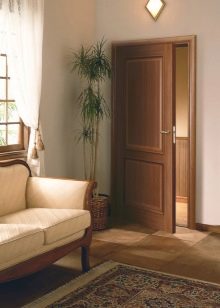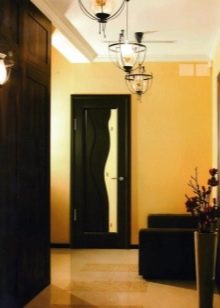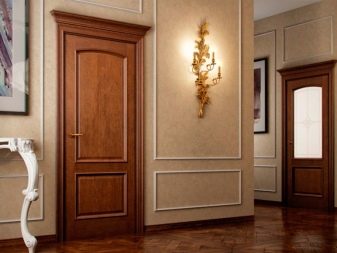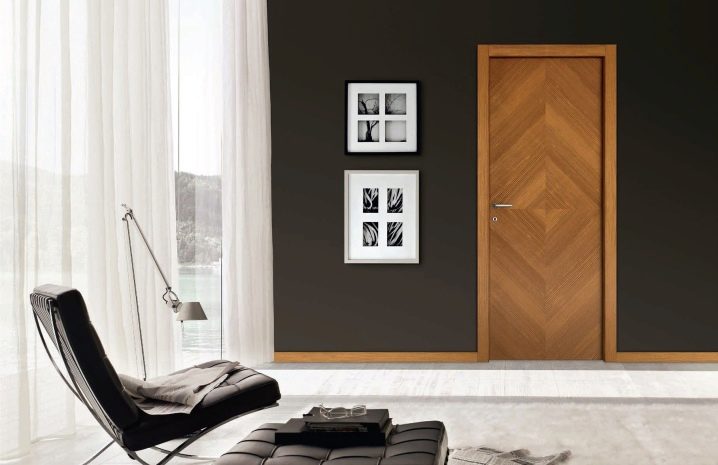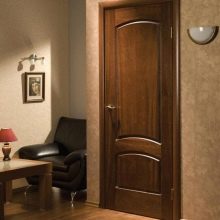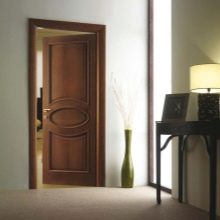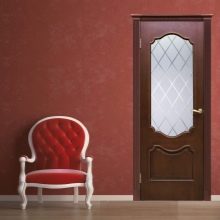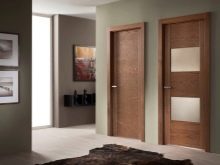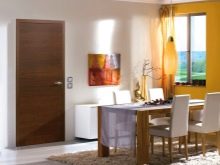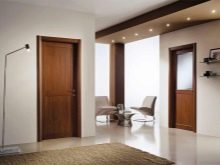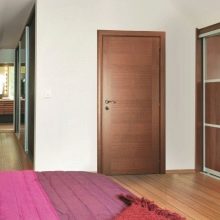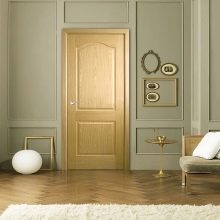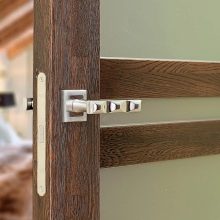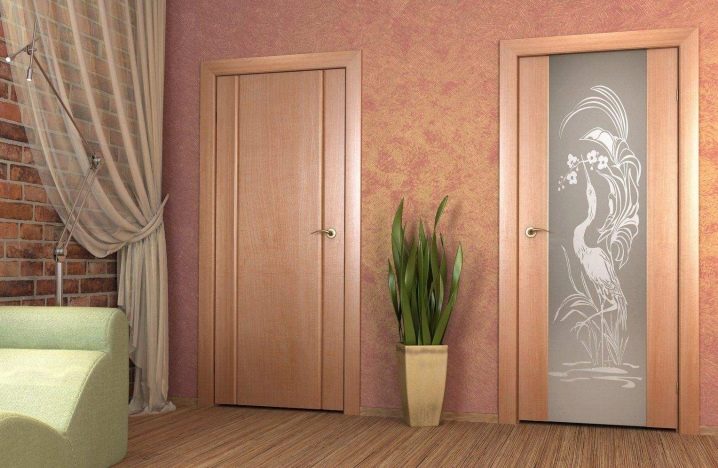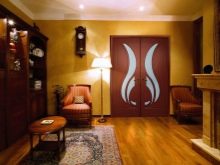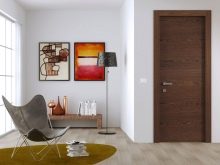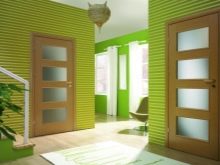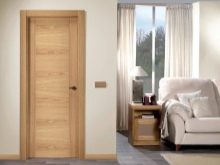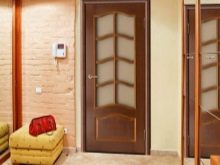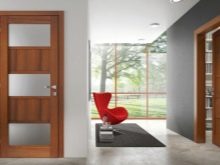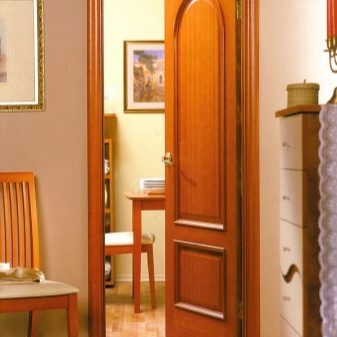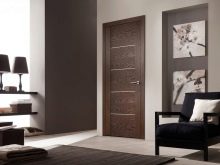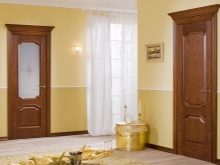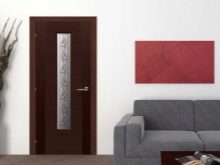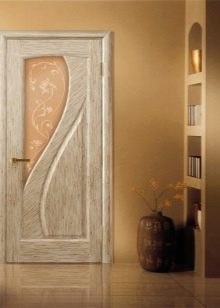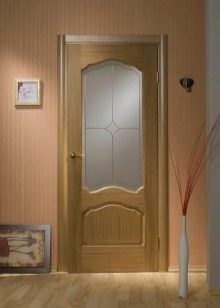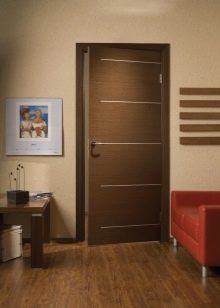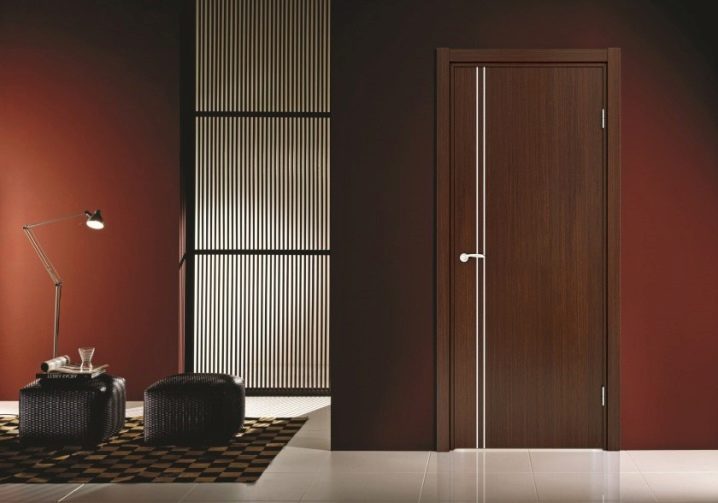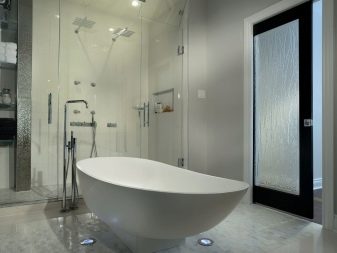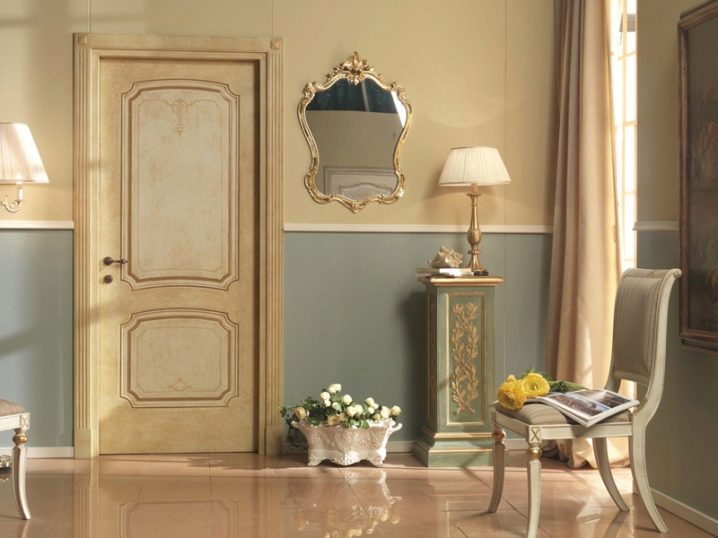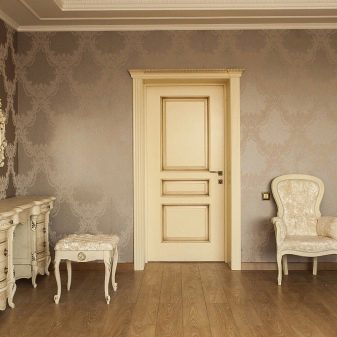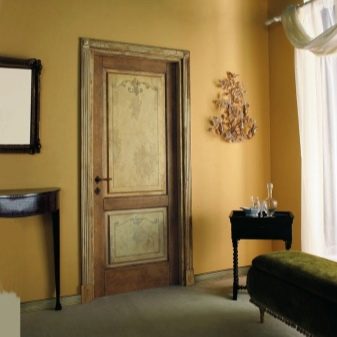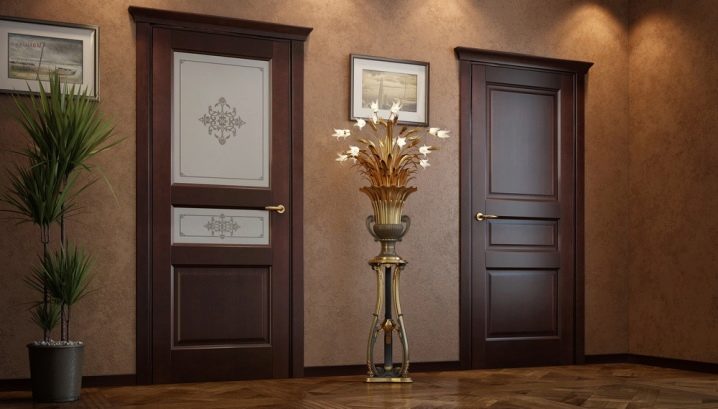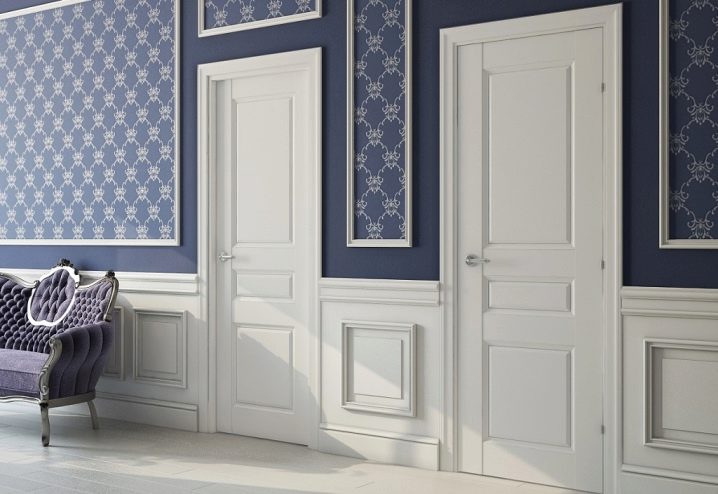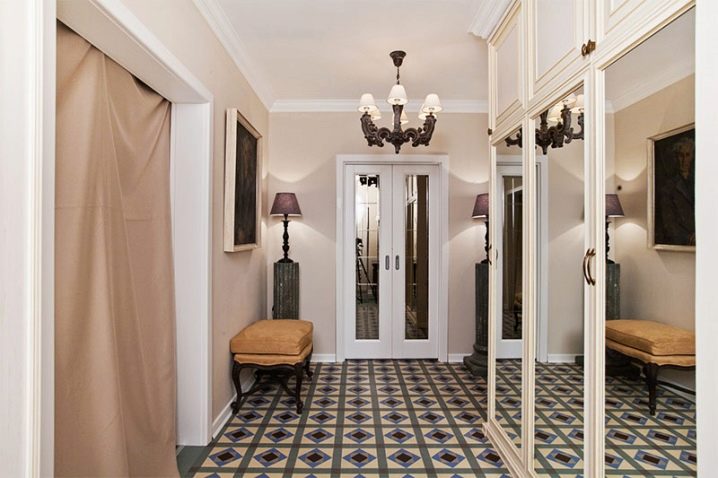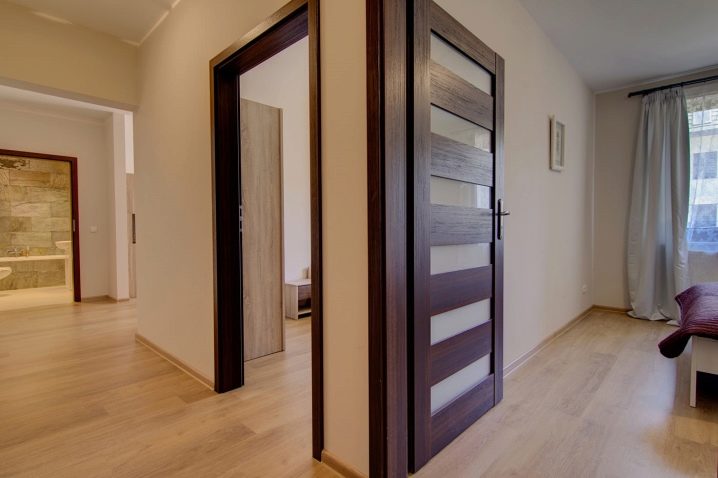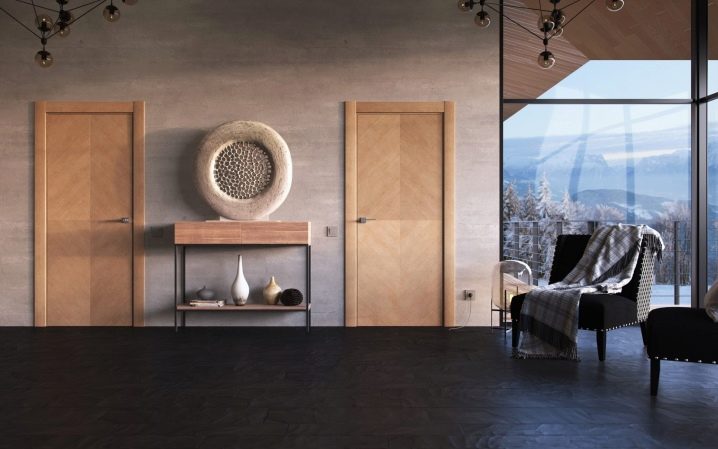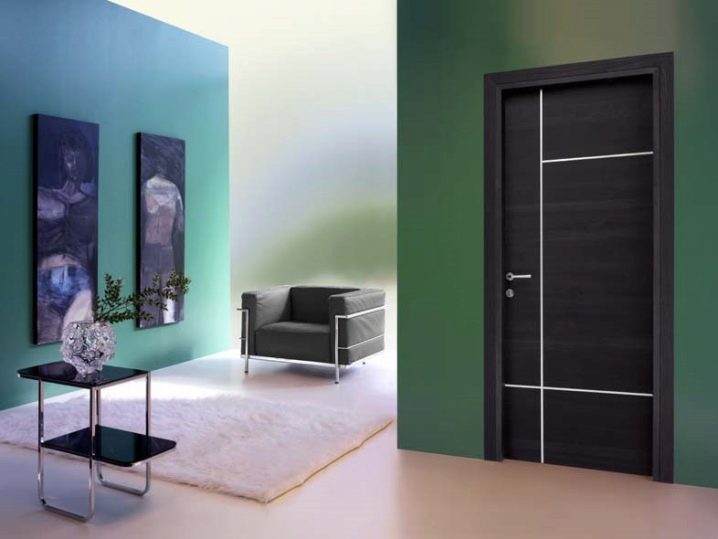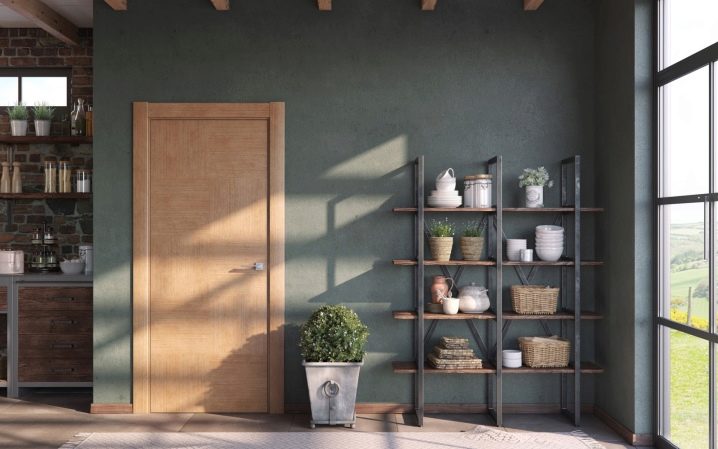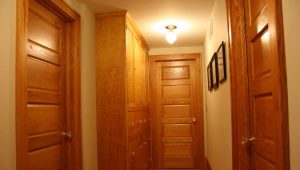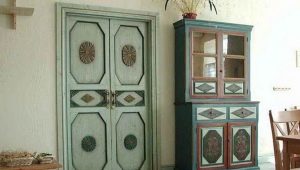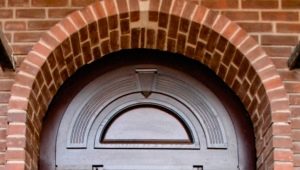How to choose veneered doors?
Doors divide the space of an apartment or house and create a cozy atmosphere, which is why it is so important to choose the right models from these natural materials. Veneered canvases are an excellent choice, in which the price-quality ratio and aesthetics are successfully selected. How to choose veneered doors - the current and eternal question of homeowners who are faced with repairs. To answer it, you need to get acquainted with the concept of "veneer" and types of doors.
What is natural veneer?
Natural veneer - a thin cut of wood, which revet the door leaf. The cut is obtained by cutting, planing or peeling a tree.
The manufacturing technology of veneer, regardless of the method of removing it is:
- Logs are cut into thin equal to the thickness of the tape about 0.6 mm using special equipment;
- The resulting ribbons are cut into identical sheets and stacked on top of each other - usually such a “pie” consists of 3 sheets;
- The folded sheets are glued together to form a dense sheet of the future covering of the door, which is called plywood;
- The obtained plywood is polished and painted, but the sheet is not always painted, because sometimes it is necessary to imitate an expensive type of wood or enhance the natural shade of wood;
- After plywood is applied to the workpiece or the core of the door and glued by cold or hot pressing.
Veneered doors are dried and then varnished after pre-cutting to fit the fabric to the desired dimensions.
Shponirovanny interroom doors meet most often at the expense of a great demand which is dictated by environmental friendliness and almost 100% a natural origin. Despite the adhesive in the composition, such a canvas is considered completely natural. But the snag is that manufacturers often try to reduce the cost of the future canvas and instead of full veneer it uses eco-material - sheets of pressed wood chips, or eco panels.
Kinds
Under the veneer is usually understood as a section of natural wood. In addition to natural material There are the following types of veneer:
- Eco Scrap.An artificial covering which usually imitates texture and drawing of a natural tree. Despite its low cost, it is more resistant to temperature and humidity, mechanical impact on the canvas and at first glance does not differ from the natural counterpart. Eco-shears are created from wood waste, sawdust, which are glued together and pressed into thin sheets. The technology of ekoshpon is similar to natural.
- Artificial evroshpon. Synthetic laminated material from woodworking industry and glue. The difference from the previous one is that the euroshpon is pressed for a longer time. It is often called a CPL film.
- Ultra spine. Another modified version of the ekoshpon, which is characterized by multi-layered and more close to the texture of natural wood. It is resistant to moisture and mechanical damage, while the price of the ultra-spike is even lower.
Manufacturing methods
The core of the door, or its “body,” may be solid and hollow. Solid door - solid or spliced solid pine or spruce (or any other softwood).The spliced core of the canvas is made as follows: a frame is created from a pine bar, the bars are laid close to each other. The resulting design is sent under the press and fixed with glue. For this, high temperature is rarely used, often microwaves.
Then the future of the canvas is polished and calibrated. A plywood sheet or MDF is stuck onto it and sent under a cold press to dry the glue. Next, the wooden canvas is sent to the machine and adjusted to the desired size.
On the machine for gouging grooves for loops and fittings (if the fittings are factory-made). After that, the door is sent to the next point for grinding, polishing and varnishing. Several such stages pass, after which the door is considered finished and sent to the factory.
The hollow cloth is made as follows: the skeleton is created from a bar and is filled with a honeycomb core - cardboard. Another common veneer variant is polystyrene foam plates. The future closes with MDF plates and is veneered with veneer, more often artificial.
Veneered sheets can be subjected to the method of cold or hot pressing,Often these two methods are combined. Self-adhesive veneer is a film that is applied to the finished canvas and does not always imitate wood. Often it resembles a marble, stone coating.
Advantages and disadvantages
Shponirovannye doors - the cloths covered with a natural cut of wood which externally do not differ from similar from 100% of the massif. They have the following advantages:
- Natural composition: solid pine or coniferous wood inside and a valuable cut - outside. Impurities of glue in such doors also exist, but their percentage is negligible - about 1%;
- Environmental friendliness;
- Aesthetic appearance. The natural tree differs from an artificial covering in unique and unique drawing and texture. Despite the fact that manufacturers have already learned how to imitate it, natural material can be visually distinguished from fakes;
- Create a favorable microclimate in the apartment or house. Wooden doors breathe; air passes through micropores;
- Lightweight that allows you to install them on thin and non-bearing walls. Veneered doors rarely sag, unlike 100% solid wood, provided that they are properly installed;
- The best value for money.Shponirovanny doors cost cheaper in comparison in the same doors from the massif. If we talk about ekoshpon and other artificial turf, then natural cost more. They are the golden mean;
- Shponirovanny doors often imitate cloths from 100% of the massif of valuable breed of wood. Often you can find mahogany veneer, ash, wenge, oak, cherry, beech and truly exclusive breeds: black walnut, madrona, makasar, mahogany and others;
- They can be reconstructed if the canvas is slightly damaged during use or careless attitude: it is enough to polish or paint a part of the door with a special compound;
- Veneered models are well insulate noise and retain heat, provided that inside them - solid or spliced solid pine.
The texture of natural veneer is fully consistent with the texture of solid wood. And at first glance it is almost impossible to distinguish one from the other, provided that the door is made qualitatively. The quality of the products is based on how conscientious the manufacturer is, what equipment and raw materials it uses. Truly solid doors made of natural veneer will cost a lot, along with an array of medium soft alder or spruce wood.
The color of veneered doors can be natural with minimal processing. Often the veneer is pre-stained to obtain a deep and visually expensive wood.
Veneered canvases have disadvantages, for example:
- Are expensive, especially if the manufacturer is very famous;
- Unscrupulous sellers can give artificial veneer for natural, and a newcomer to this issue is unlikely to distinguish one from another. Minus veneer - it can be easily faked;
- It requires reverent attitude and care with special wax-based products.
Doors made of natural veneer - the golden mean, which buyers are usually looking for.
Such canvases are good for any room in the house, be it a bedroom or a living room, a bathroom or a kitchen. Quality doors are resistant to a small temperature difference and are ideal for a bathroom. There is one thing: if water regularly hits the door, the veneer can “peel off”. Customer testimonials on natural veneer in cladding are the most flattering: almost every customer appreciated the quality of the door and its long service life - 10-15 years.
The door is not only a cloth, but also a box, a set of platbands and dobor.The latter are wooden panels in the color of the canvas and are needed if the wall of the opening is too wide. The dobora overlap a part of the wall that the box has not closed and serve as an obligatory decorative element.
And, by the way, they can be saved by choosing models with artificial turf instead of veneered dobor, if it does not differ from the color of the canvas.
Materials
Veneer is made from various materials, and it is always natural wood of more valuable species: oak, mahogany, beech, cherry, ash and others. Inside the high-quality and practical door is an array of pine, and to make the canvas more expensive and aesthetic, manufacturers use veneer coating.
One of the most expensive and solid coatings is oak. In the second and third places - beech and ash, walnut and cherry, which look great in all interiors. The main difference between natural veneer and artificial coating is that the first one has a natural asymmetrical pattern that cannot be faked. Often this pattern is selected at the factory so that the canvas is more or less symmetrical, there are no obvious differences in the pattern.If you look closely at the veneered door, you can note that the picture is still different: it does not have the same width and length of the grooves.
Veneer doors veneered with ash veneer have a light shade and resemble bleached oak or beech. Mahogany veneer directly speaks of the reddish tint from the name, like the zebrano: this veneer is distinguished by a pattern of stripes.
Facing material stone veneer is made from natural slate and repeats the texture of black or white marble. Oak is an excellent web material, but expensive and capricious. Like any solid wood, it can deform from too humid conditions, dry air in the room and any disturbances in the microclimate of the room. But the service life of paintings from 100% solid wood is impressive: about 50 years.
Wooden interior doors are divided into two categories: solid and with glass:
- Deaf - completely wooden, and the most accessible element of their decor - these are panels - panels on the facade of the door, which give them an irregular geometric shape and often create a visual volume.
- Doors with glass visually increase the space, make it bright.Glass can be any: dark, light, glossy, frosted and different degree of transparency. It can be fusing - volume elements or a pattern, pattern.
Doors can be coated with enamel - paint. Enamel canvases also have a number of advantages, and above all it is fire resistance and hygiene. It is enough to wipe such doors with a damp cloth.
Which is better - laminated or veneered?
If we talk about home interior, then of course, natural wood wins: it “breathes”, creates a favorable microclimate, looks aesthetically and expensively. But pets can easily scratch the natural veneer. And what's another plus of it - the coating can be restored using a special wax-based polish. Veneered door is better for the nursery and the bedroom, if the veneer is natural. It is good for creating a classic or modern, and any other interior. The only minus of the veneered model is the relatively high cost. A significant plus - a long service life - about 15 years.
Laminated door is better suited for a small bathroom or a room with poor ventilation.Laminate is resistant to changes in temperature and humidity in a small room and is not afraid of water.
The choice of interior doors - the lesson is so individual. This choice is always a risk for the owner of an apartment or house, which is especially dependent on the budget.
Care
The door of natural veneer needs care, like any other door or furniture. Caring for her comes down to wiping with a damp cloth. You can use a special composition based on alcohol or prepare it yourself: mix water and alcohol in proportions of 9: 1.
To restore the coating, a wax-based polish will be required: it fills minor damages, restores the color of the wood and additionally protects it. By the way, about protection: in a natural tree small parasites, insects can be got. To protect against tree bugs, it is necessary to treat the cloth with an antiseptic at least once every few years. We are talking about doors from 100% solid wood with minimal processing and other pieces of furniture.
Paint veneered door can not. The only coating whose color can be changed is enamel. Enamel and laminated doors can be washed with soap and water,if there is heavy pollution on the canvas, which is strictly forbidden to do with wooden counterparts because wood can “absorb” water. After processing the wooden door with plain water, it is recommended to wipe it dry.
Any cloth is wiped with a soft sponge or cloth and means without hard abrasive particles.
Decoration options
Interior doors can be deaf - wooden, smooth, concise and without unnecessary details. Veneered with a natural coating aesthetically and costly look even without decor. They can be paneled - with bulky straps on the surface. Glazed models visually transform the space and even visually expand it. They look good in the living room and especially in the bathroom. In the latter, they are practical: it is clear from the switched on light that there is someone in the room. Buyers began to select glass doors to a bathroom and a toilet relatively recently, because there was no translucent glass. Even if the room lights up, the silhouette of a person is not visible.
Glass can be simply frosted or glossy, transparent, differ in color.Often it is decorated with fusing - volumetric glass elements in the form of drops, circles, squares. On the glass can be a pattern or pattern.
An excellent element of decor - portals, decorative trim with elements of thread. Often the doors are decorated with patina, spraying the canvas with golden or silver paint. Patinating is an artificial aging of elements of furniture or cloths, and it looks especially good in the classic and rustic format. Under this description is ideal Provence.
Examples in the interior
Shponirovanny doors are irreplaceable in a classical interior. Noble wood transforms and emphasizes the image of the room, creates comfort. Light oak or ash models are combined with light trim, light walls and floor.
Particularly relevant are those patinated doors that have an artificial touch of antiquity on the facade. A natural wood shade looks equally good in a classic and modern interior, in a contrasting light or, on the contrary, dark finish.
Classic models in one color may vary the finish. Pay attention to how concisely a deaf and glazed door looks like in one corridor.
White doors - a new classic. And they will not always be veneered, often bright canvases covered with enamel, which creates a light glossy effect on the surface. White doors look favorably on the contrast in the form of a dark shade of the walls. And be sure to be supported by light, white furniture or decor. From the point of view of practicality, white canvases are not inferior to wooden ones, and it is also easy to care for them.
Double doors create an accent in the room and are ideal for a living room or kitchen. Without them, an opening 100 cm wide and more will not do, and such models with glass are especially attractive.
Dark veneered doors in wenge color are appropriate. in modern and classic. In conditions of large or not too much space, the game of contrasts looks advantageous: light walls and dark brown canvases. To make the image of the room complete, the color of wenge should be supported with other dark furniture: bed frame, kitchen worktop or a small pedestal.
The Art Nouveau style reflects modernity, which means that a door with an eco cover covering will be suitable for its creation.
If in the classics this material is not quite appropriate, then in the modern direction is quite.In this case, the color of the canvas may not be completely natural: gray, black, coffee and crystal white with aluminum or glass inserts.
The canvas in modern style with aluminum elements can visually change the proportions of the room: thin vertical panels visually expand, the vertical make the web above.
One of the most common colors is Milanese nut. However, modern designers have long departed from the annoying shade and minimally use it in their projects. The exception is an unusual combination of a warm wood shade in loft or hi-tech interiors, where it is necessary to smooth out the industrial image of the room. The Milan nut can be beaten by a geometric pattern on the canvas - horizontal and vertical stripes on the surface in an interesting combination.
You will learn more about how to choose veneered doors in the following video.
